
Catalyzing applied research in Peru
By Catherine Jewell, Communications Division, WIPO
Universities in all countries play a key role in pushing the boundaries of scientific and technological development. But translating research results into practical applications that benefit society can be a challenge, particularly in developing countries where national innovation ecosystems are in their infancy. Developing and implementing an institution-wide intellectual property (IP) policy is an essential first step in strengthening the focus of universities and their researchers on the practical application and commercialization of their work.
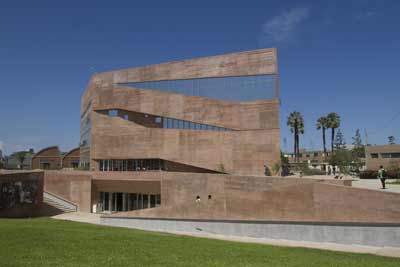
its strategic use of IP to strengthen its applied research activities
and support business development (photo: Courtesy of PUCP).
Recognizing the significant benefits that can flow from the strategic use of IP, Peru’s Pontifical Catholic University (PUCP) has been at the forefront of efforts to strengthen its applied research activities and to encourage other national universities to follow suit. Making IP a strategic priority is enabling it to harness the value to its research results and bolstering its reputation in international research rankings. It is also supporting efforts to strengthen Peru’s national innovation ecosystem.
PUCP’s IP strategy: dividends
The University’s IP strategy began to take shape in 2004 and was formally adopted in 2009. In the same year, it established an IP office which offers a range of IP support and business development services to researchers across the campus.
“The University’s IP strategy establishes a solid basis to promote innovation and creativity across the campus,” says Melisa Guevara, who heads up PUCP’s IP office. PUCP’s IP strategy also sets out arrangements to reward researchers for their commercially successful inventions. “This has been a very effective way to get the buy-in of researchers,” notes Ms. Guevara. “Royalty payments create a very useful additional income stream for researchers.”
“Clear rules are always a good thing. Having clarity about what you own, what PUCP owns and what is shared makes things much easier,” says Adolfo Pillihuaman, a researcher in the University’s engineering department. “PUCP’s support and commitment to applied research and IP is having a positive impact on the University’s researchers and their outputs. It has fired the creativity of everyone and is helping us to demonstrate the value and quality of our work.”
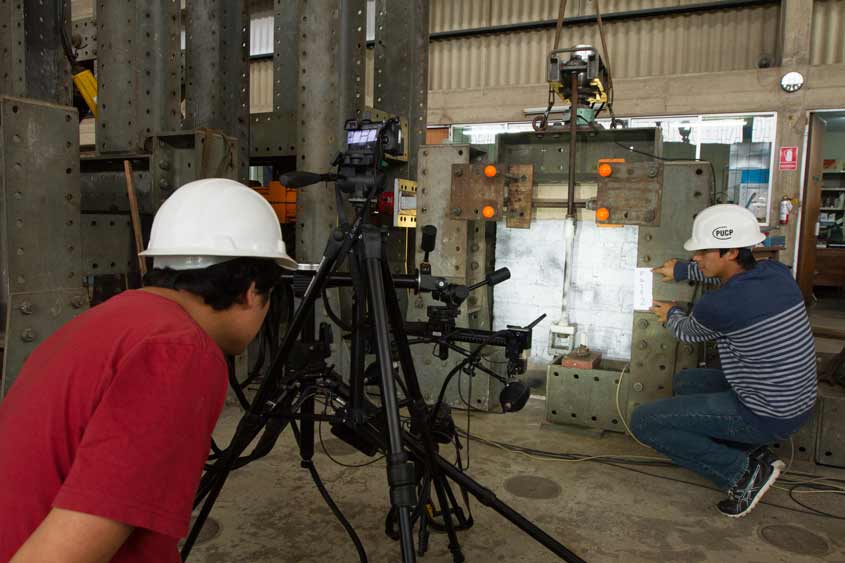
Mr. Pillihuaman’s research team, which includes Edmundo Alfaro and Manuel Shishido, is working on a novel, cost-effective and environmentally-sound mining technology to extract precious metals from refractory ores. Peru is a one of the world’s leading exporters of minerals like copper and gold, accounting for around 60 percent of the country’s exports.
PUCP’s IP office has its own budget and is fully autonomous. Its multi-disciplinary team of IP experts is responsible for evaluating the patentability of any new technologies developed on campus, and for developing appropriate IP strategies for their commercialization. This is having a “decisive impact on the development of patent-protectable technology in our laboratories,” says Ms. Guevara. The office also offers researchers support in negotiating licenses and other business contracts with third parties. And it has specialized translation services to help young researchers access research results published in foreign journals and support the subsequent publication of their work those journals.
The final decision about whether or not to protect a new technology falls to PUCP’s Intellectual Property Commission, which is made up of professors and leading scientists. The Commission is also responsible for shaping the University’s internal IP policies and handles any tricky IP-related issues that arise. “The Commission’s structure ensures that we have the required interdisciplinary vision to evaluate new technologies rigorously. It also gives us a market perspective and helps us connect with and transfer our research results to third-party businesses,” explains Ms. Guevara.
Engineering a shift in IP awareness
PUCP’s IP strategy is bringing about a perceptible shift in the way its researchers approach their work. “There is now a much stronger IP awareness among our researchers. Although publishing their work in academic journals remains important to them, they now recognize the advantages of protecting their work with IP before going public with it,” says Ms. Guevara. The University’s internal rewards policy, which recognizes both academic publication and patents, is largely responsible for this change.
“It has not been an easy process, but we are getting very good results which are having a favorable impact on our international ranking and mean we can transfer new technologies to industry more easily. We have already established a number of strategic business partnerships,” she notes.
You have to see opportunities where you see problems, and you have to try to solve them every chance you get. You can never give up!
Mónica Abarca, co-founder of qAIRa, a PUCP spin-off.
Peruvian investors are beginning to bet on the University’s technology-based spin-offs and startups. “This would have been unimaginable a few years ago,” says Ms. Guevara. But support from the central government and industry, and a more favorable business environment, mean that in addition to the emergence of a growing number of university spin-offs, there is greater interest in the University’s work among established businesses. “Peruvian investors are showing much greater interest in the joint development of technology-based businesses, either directly with our University spin-offs or with startups to whom we license our technologies. This is a whole new experience for us but is generating good results. At PUCP we are developing technologies that specifically address the realities confronting Peruvian companies. That’s the difference.”
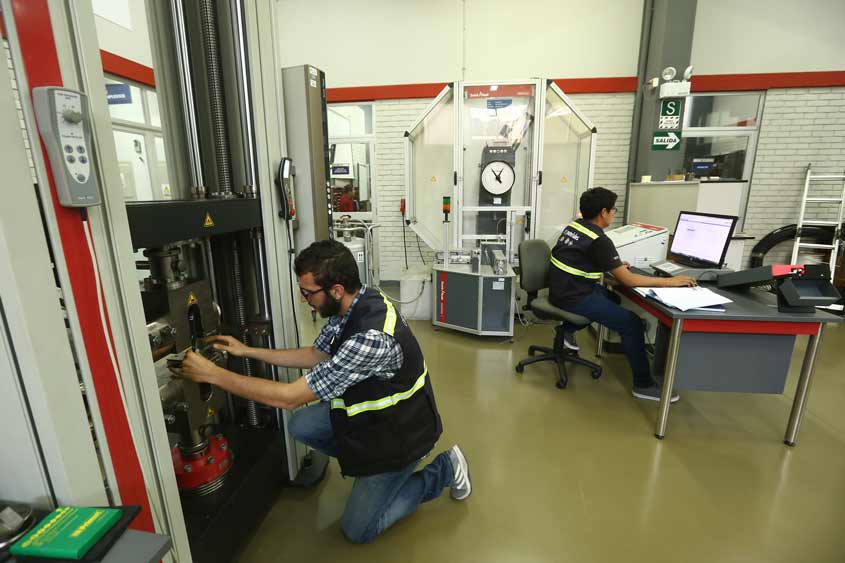
Changing mindsets and supporting business growth
IP has become part of PUCP’s daily life, and while it has strengthened its applied research portfolio, transferring its research results to the market remains a persistent challenge. “We still have a great deal to do to further strengthen our ties with business actors,” explains Ms. Guevara. Changing perceptions that foreign technology is superior to homegrown solutions is a constant struggle. “This is a challenge we face as an institution and as a country,” Ms. Guevara says, noting that it is further compounded by the risk-averse culture that exists among Peruvian businesses.
But she remains optimistic. “Little by little with the support of government, we are creating the space and attracting the funds necessary to develop and consolidate our ties with the business sector. Strengthening ties with industry will allow the university to identify research priorities that enable its startups and other small businesses to anticipate market trends and to evolve,” Ms. Guevara explains. “Our entrepreneurs, most of whom are small business owners, need to become less risk averse and more proactive, and need to work to strengthen and consolidate their business associations to support the expansion of Peru’s technology market. Peru’s business community also needs to recognize that together they can achieve much more than by competing with each other. We need a long-term vision.”
With investors from Silicon Valley knocking at the door, the PUCP’s IP office is now focusing on the international transfer of its technologies. “We could not have imagined that this would be possible a few years ago,” says Ms. Guevara. And it all stems from the University’s foresight in developing and implementing an institution-wide IP strategy. “Putting our IP strategy into place and giving it political importance across the University has created a fundamental change in mentality and is beginning to create some really interesting opportunities for innovation. We hope that our experience will inspire other Peruvian institutions to follow suit, so that together we will be able to contribute to the development of our country.”
But not content with simply putting an IP strategy into place, PUCP is also leading the way in developing a business incubator and actively encouraging its researchers to take the entrepreneurial route. “We were the first university to establish an IP office in Peru, and we were also the first to set up a specialist business development and incubation unit to support spin-offs. That’s why many public and private institutions seek our advice and guidance when developing their own IP policies and technology transfer processes,” Ms. Guevara explains.
qAIRa: a PUCP spin-off
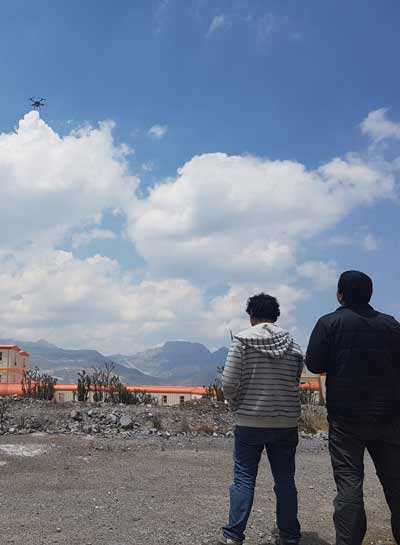
large areas and at high altitudes to gather air quality data so that
mining companies, in particular, can better monitor the impact of their
operations and improve their environmental credentials (photo: qAIRa).
qAIRa, established in 2014 by PUCP research student Mónica Abarca, together with Carlos Saito and Francisco Cuéllar, is one such spin-off. The company uses drone technology to tackle air pollution, a major concern in urban areas as well as within Peru’s extensive mining communities. Air pollution is also a global concern in that it contributes in a big way to climate change and causes respiratory and cardiac diseases that claim some 7 million lives worldwide every year, according to the World Health Organization.
Current practice for air quality data collection relies on static stations that cover small areas and are expensive to establish and maintain. “These stations need to operate over extended areas to collect sufficient data for big data analyses. Under the current set-up, big data analyses were not going to be possible any time soon, so we decided to develop an alternative and more cost-effective solution,” says Ms. Abarca.
“qAIRa uses big data analytics and robotics to digitize and democratize air quality information in a real-time global pollution map,” she explains. “We design and build drones to form a ubiquitous network. The drones fly over large areas, and at high altitudes, to gather data about the quality of the air we breathe. We use these data to create a global contamination map, so that companies – especially mining companies – can better monitor the impact of their operations and improve their environmental credentials.”
Ms. Abarca filed for a utility patent with Peru’s IP office, INDECOPI, in 2014. “We understood at an early stage that it was important for us to protect our technology. This will mean we can license it out, if and when the opportunity arises,” she notes. “The IP system is increasingly used in our country, with positive results. IP allows us to add value to our technology, but the patenting system needs to become much faster because the technology is developing so quickly and the time it takes to acquire an IP right affects its value in our negotiations with potential clients. As a small startup, we would also like to see it become cheaper to obtain IP protection.”
Securing the financial resources needed to develop the technology, buy the components for the first prototype and keep the company going were major challenges. Financial support from the University and state grants through CONCYTEC (the National Science, Technology and Innovation Council) and Start-Up Peru, as well as the support of angel investor Javier Calvo, kept Ms. Abarca’s dreams alive. “The financial support we received from PUCP and the Peruvian Government was critically important,” she says.
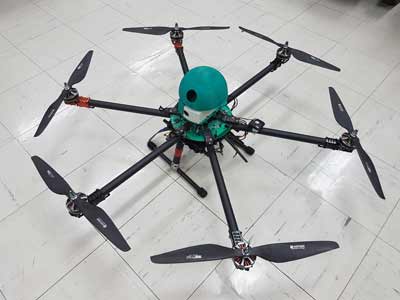
Mónica Abarca, together with Carlos Saito and Francisco Cuéllar,
develops drone technology using big data analytics and robotics to
map air pollution. (photo: qAIRa).
Now, the future is looking bright for the company and its seven-strong team. “The mining industry is deeply interested in our solution, not only to monitor air quality but for other purposes,” says Ms. Abarca, who also foresees applications across a range of industries. “Air pollution is a problem for every industry – oil and gas, agriculture, electricity and many others.”
So the hope going forward is that PUCP’s decision to implement its IP strategy will continue to inspire its researchers and those in universities across the country, enabling them to realize their huge innovative potential. “Peruvian researchers are ingenious and adaptable, as is our business sector,” says Adolfo Pillihuaman. “More effective use of the IP system will enable us to improve our visibility on the international stage as producers of high-quality technologies. It will enable us to add value to the ingenuity and talent of our researchers and our businesses so that the country as a whole becomes more competitive and achieves its economic goals.”
Related Links
The WIPO Magazine is intended to help broaden public understanding of intellectual property and of WIPO’s work, and is not an official document of WIPO. The designations employed and the presentation of material throughout this publication do not imply the expression of any opinion whatsoever on the part of WIPO concerning the legal status of any country, territory or area or of its authorities, or concerning the delimitation of its frontiers or boundaries. This publication is not intended to reflect the views of the Member States or the WIPO Secretariat. The mention of specific companies or products of manufacturers does not imply that they are endorsed or recommended by WIPO in preference to others of a similar nature that are not mentioned.